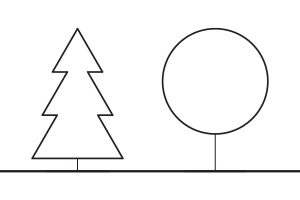Quicklinks
Introduction
Daisugi is a Japanese forestry technique that produces high-quality, knot-free lumber from a single tree. The term roughly translates to “platform cedar”. It’s related to pollarding, and it is traditionally used on Kitayama cedar in Japan.

The technique involves:
- Repeatedly pruning the upper branches of a tree to encourage the growth of new shoots
- Pruning the new shoots from the base of the shoot, so that the trunk stays straight
- Felling just the top shoots, leaving the root and base tree intact to grow future shoots.
History & Inception
Daisugi is believed to have originated in Kyoto, Japan around the 14th century. About this time a style of architecture called ‘Sukiya-zukuri’ became very popular among noble samurai. The style itself is characterized by straightness and simple slender lines in the structural members such as roof rafters and beams — and therefore builders needed small, strong, true pieces of wood.


Due to the popularity, there was not enough naturally growing raw materials to build houses for all the samurai, and so this forestry technique was developed as its efficient and sustainable since it essentially farms and harvests the wood without cutting down the tree.
Visually stunning, this technique can still be found 600 years later — although it’s primarily implemented for its visual effects in gardens.
Time
Kitayama cedar is used because it can be felled approximately every 20 years — much faster than using and finding naturally growing trees and pruning them — and as mentioned, more sustainable.


Strength & Properties
Since the branches are cut, there are no knots in the wood at all. Additionally, if pruned properly, the shoots are extremely straight and true. Nearly all the wood ends up being extremely straight and akin to rift sawn qualities, without the waste.
The wood itself is stated to be 140% as flexible and 200% as strong as the same wood grown naturally elsewhere in normal growing environments. However, it’s hard to find sources to verify this claim — although its use in practice supports this.






Leave a Reply
You must be logged in to post a comment.